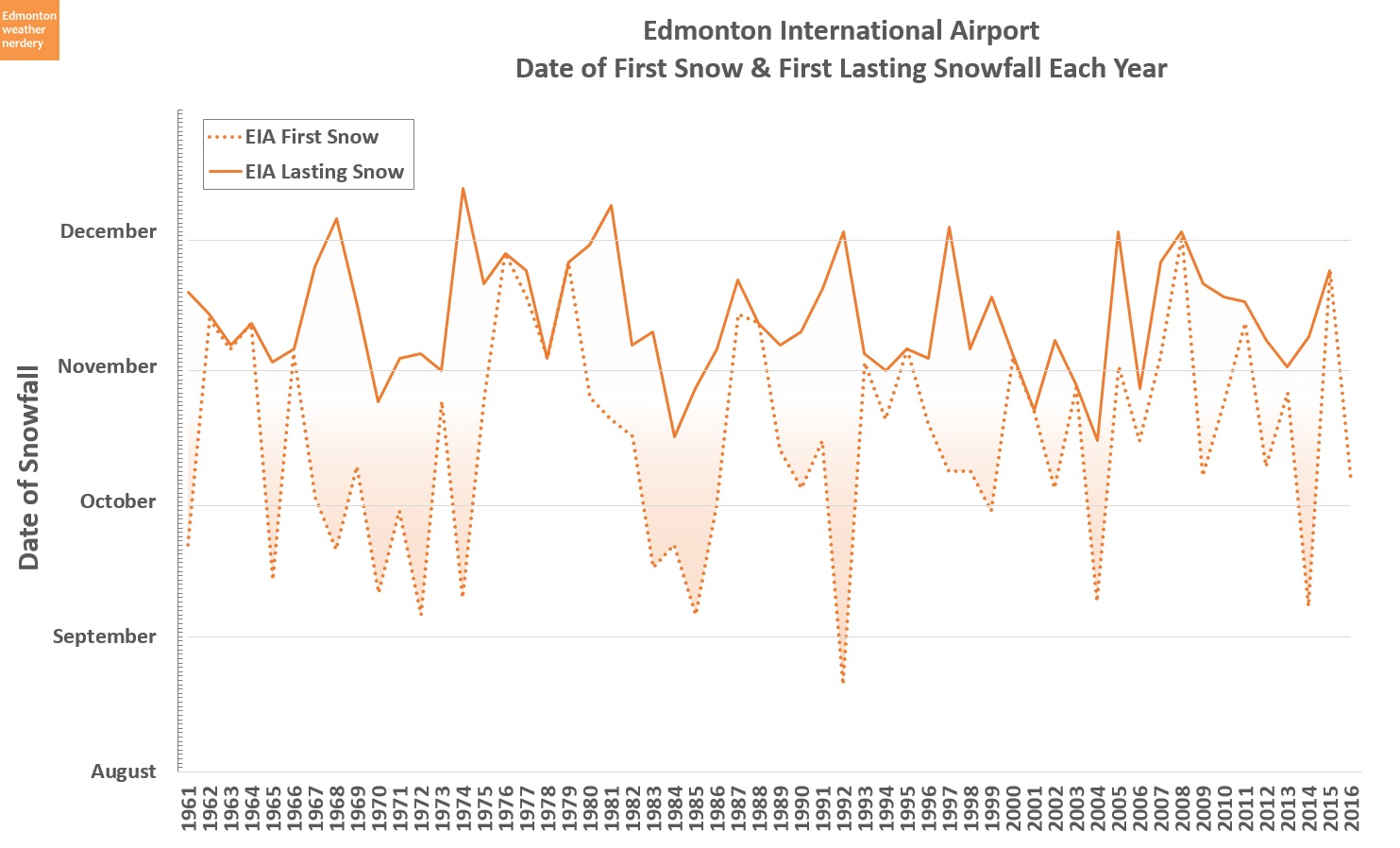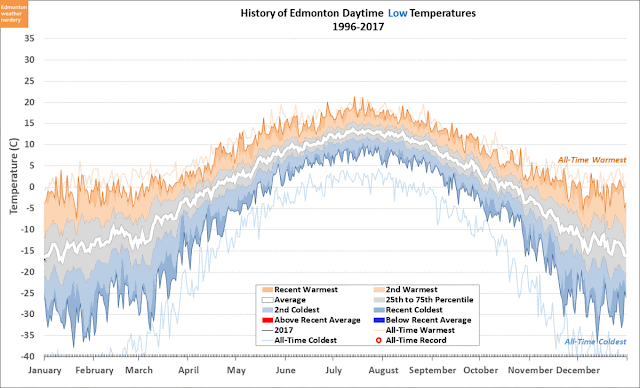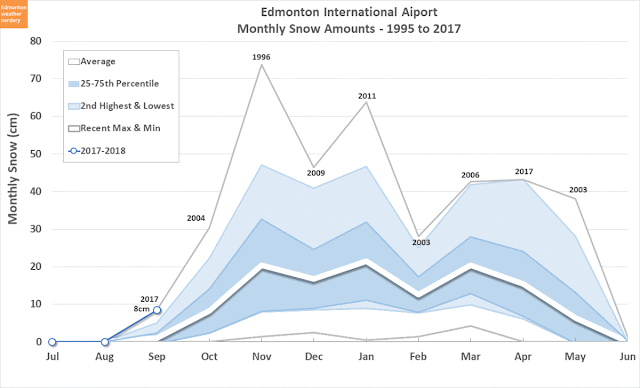Last year at the end of August we looked at
how warm 2016 was compared to other years. At that point 2016 was in a commanding lead as Edmonton's warmest-recorded year. But then things cooled off a bit through the fall, and by the end of December
2016 had finished in 3rd place.
Today we're going to see how 2017 compares, now that we've reached the end of September (I'd planned to do the end of August again, but got sidetracked).
To start off with, a bit of a recap:
Edmonton's Warmest and Coldest Years
This chart shows Edmonton's warmest and coldest years, going back to 1880. It takes the average daily temperature for each year, and compares that to the average for the 20th century. Warmer years are shown in orange, and colder ones are in blue.
2016 is in third place on the far right, and across the entire year the daily average temperature was about 3°C warmer than the average for the 20th century. 2017 isn't included in this chart because it isn't finished yet, and comparing a partial-year isn't fair to all the rest.
If you are interested in more background on the chart, the original explanation is
here.
The Horserace
This chart shows where those year-rankings come from, broken down to a day-by-day basis. The full explanation of it is
here, but each year gets its own line, and days that are warmer than the 20th century average drive that line up, while colder days drop it down.
It gets pretty messy as all of the years pile up, so to get a better look at 2017 we'll just focus on recent history:
2007-2017
Here we have the lines for 2007-2016 shown for some context, and then all the older years are simplified into the orange, white and blue quartile ranges in the background. 2017 appears in red.
As of September 30, 2017 is sitting well below where 2012, 2015 and 2016 were at this point in the year, but it's above all of the other recent years.
Anytime that the 2017 line dips down - like at the beginning of January, February and March, and then late-April and then mid-September - that's a coldsnap. And any sharp jumps upwards are the warmspells. Digging into the numbers a bit, at the end of September we are 274 days into the year, and 2017 has racked-up 561 "points" (a point is basically one °C above the 20th Century average). That works out to an average of 2°C warmer each day than the 20th Century average.
In comparison, at this time last year 2016 was at 1018 points, or 3.7°C above the average. But then the cool fall and winter dropped 2016 to 2.9°C. In terms of rankings, the last 10 years range from 2016 in 3rd-warmest to 2009 down at 69th.
Top 10 Years
Here we have the same thing, except that this chart compares 2017 to Edmonton 10's warmest years rather than to the last decade. At this point of the year 2017 is about tied with where 6th-place 1976 was. But there are still three months left in 2017, and there's no telling where it will end up.
High Temperatures
This chart shows the High temperatures for 2017 so far.
2017 has broken 4 all-time records for highest temperatures: on February 15, May 5 and then last month on September 7 and 11. It also broke 17 other recent warmest-Highs (going back to 1996), and 7 recent coldest-Highs.
The sections in red and dark-blue show how much time we've spent above or below the recent average. With that, it's easy to see the coldsnaps we had in early January, February, March, and then for most of April. We can also see how much September fluctuated: two all-time records, then two cold weeks, and then a warm week to end things off.
Low Temperatures
The Low temperatures are similar, with the coldsnaps in January, February and March showing up again.
So far 2017 has had 6 all-time record warmest-Lows, on May 5, June 8, August 23 & 28, and September 8 & 27. And then there are 17 other recent warmest-Lows, and 4 recent coldest-Lows.
Precipitation
And finally, here we have the Precipitation for 2017 so far.
The 2017 precipitation for both of Edmonton's main weather stations is shown here, with the International Airport in
Blue and Blatchford dotted-in in
Red. The reference range in the background - the green and grey and yellow areas - is all based on data from the International Airport's for 1995-2016. Blatchford is missing data for several of those years, so that is why the International is used here as the reference instead.
At the end of September the International had recorded 442mm of precipitation compared to only 344mm at Blatchford, for a difference of almost 100mm. That difference mostly happened during the summer months, with Blatchford's July and September precipitation well below the International's. Last year we had looked at
how similar the precipitation between the two stations typically is, and a 100mm difference between the stations isn't unprecedented, but it's definitely on the high-side of things.We'll check in again once the year is over.
So that's the scorecard so far for 2017: fairly warm, but nothing like 2015 or 2016; and precipitation at the International is a bit above average, while Blatchford is a little bit below.































